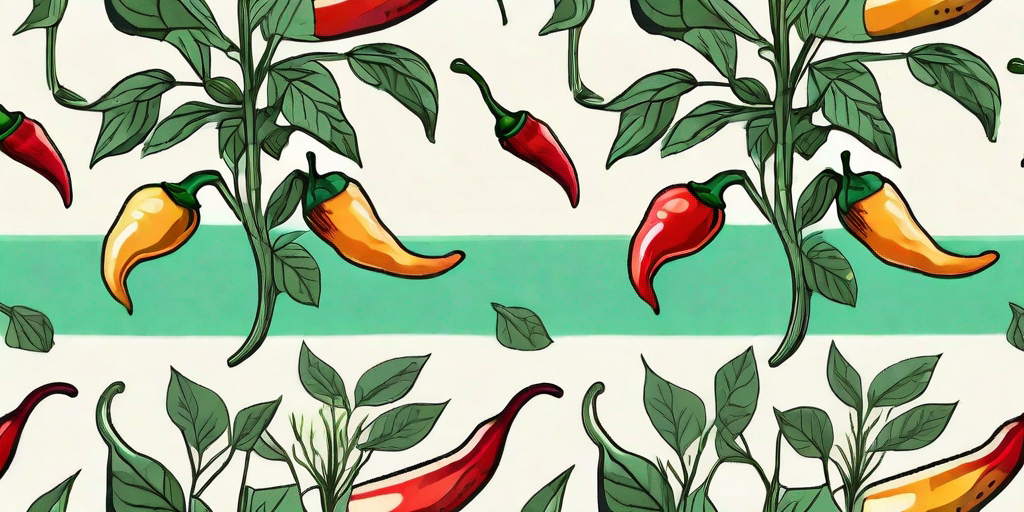
If you're looking to add a little heat to your life, why not start with your garden? Growing chili peppers is a fun, rewarding hobby that can spice up your meals and your life. Whether you're a gardening novice or a seasoned pro, this guide will help you navigate the fiery world of chili peppers. So, grab your gardening gloves, it's time to turn up the heat!
Understanding Chili Peppers
Before we dive into the dirt, let's take a moment to understand what we're dealing with. Chili peppers are part of the Capsicum family, which includes bell peppers, jalapenos, and habaneros. They're known for their heat, which is measured in Scoville Heat Units (SHU). The humble bell pepper sits at zero SHU, while the infamous Carolina Reaper can reach over 2 million SHU. That's hotter than a summer in the Sahara!
Chili peppers are not only delicious, but they're also packed with vitamins A and C, making them a healthy addition to any meal. Plus, they're great conversation starters. Nothing says 'I'm interesting' like growing your own ghost peppers.
The Anatomy of a Chili Pepper
Chili peppers have a simple structure. They consist of the outer skin, the flesh, and the seeds inside. The heat of a chili pepper is concentrated in the seeds and the white membranes inside the pepper. So, if you're looking for a milder flavor, remove these parts before cooking.
Chili peppers come in a variety of colors, shapes, and sizes. Some are small and round, while others are long and thin. They can be green, red, yellow, or even purple. The color of a chili pepper can give you a clue about its heat. Generally, the darker the color, the hotter the pepper.
Choosing the Right Chili Pepper for You
Now that we've covered the basics, it's time to choose your chili pepper. This decision will depend on your heat tolerance, your gardening skills, and the climate in which you live.
If you're new to the world of chili peppers, you might want to start with a milder variety like the jalapeno or the serrano. These peppers are relatively easy to grow and won't set your mouth on fire. If you're feeling brave, you could try growing a habanero or a ghost pepper. Just remember to handle these peppers with care, or you might end up with a surprise you weren't expecting!
Considering Your Climate
Chili peppers are tropical plants, which means they love heat and humidity. If you live in a colder climate, you might need to start your peppers indoors or invest in a greenhouse. But don't worry, chili peppers are resilient plants that can adapt to different conditions.
Remember, chili peppers need plenty of sunlight to grow. So, make sure to choose a spot in your garden that gets at least 6 hours of sunlight a day.
How to Grow Chili Peppers
Now that you've chosen your chili pepper, it's time to get your hands dirty. Growing chili peppers is a process that requires patience and care, but the reward is worth the effort.
Here's a step-by-step guide to growing your own chili peppers:
- Choose your seeds: You can buy chili pepper seeds online or at a local garden center. Make sure to choose a reputable supplier to ensure the quality of your seeds.
- Start your seeds indoors: Plant your seeds in a seed tray filled with seed compost. Keep the soil moist and warm, and your seeds should germinate within a week or two.
- Transplant your seedlings: Once your seedlings have developed their first set of true leaves, you can transplant them into larger pots or directly into your garden.
- Care for your plants: Chili peppers need plenty of sunlight and water. Make sure to water your plants regularly, but don't overwater them, as this can lead to root rot.
- Harvest your peppers: Your peppers are ready to harvest when they're firm and vibrant in color. You can use a sharp knife or scissors to cut the peppers from the plant.
Remember, growing chili peppers is a labor of love. It might take a few tries to get it right, but don't give up. The satisfaction of eating a chili pepper you've grown yourself is worth the effort.
Frequently Asked Questions
How long does it take to grow chili peppers?
From seed to harvest, it can take anywhere from 2 to 6 months to grow chili peppers, depending on the variety and the growing conditions.
Can I grow chili peppers indoors?
Absolutely! In fact, growing chili peppers indoors can be a great way to control the growing conditions and ensure a successful harvest. Just make sure your plants get plenty of sunlight and are kept in a warm environment.
Why are my chili peppers not hot?
The heat of a chili pepper is determined by a variety of factors, including the variety of the pepper, the growing conditions, and the maturity of the pepper. If your chili peppers are not as hot as you'd like, try growing a hotter variety or letting your peppers ripen on the plant longer.
Conclusion
There you have it, a comprehensive guide to growing chili peppers. Whether you're a seasoned gardener or a complete novice, growing chili peppers is a fun and rewarding hobby that can spice up your life. So, why not give it a try? You might just find that you have a green thumb after all.
Remember, the world of chili peppers is vast and varied. Don't be afraid to experiment with different varieties and growing conditions. Who knows, you might just discover a new favorite pepper. Happy growing!











